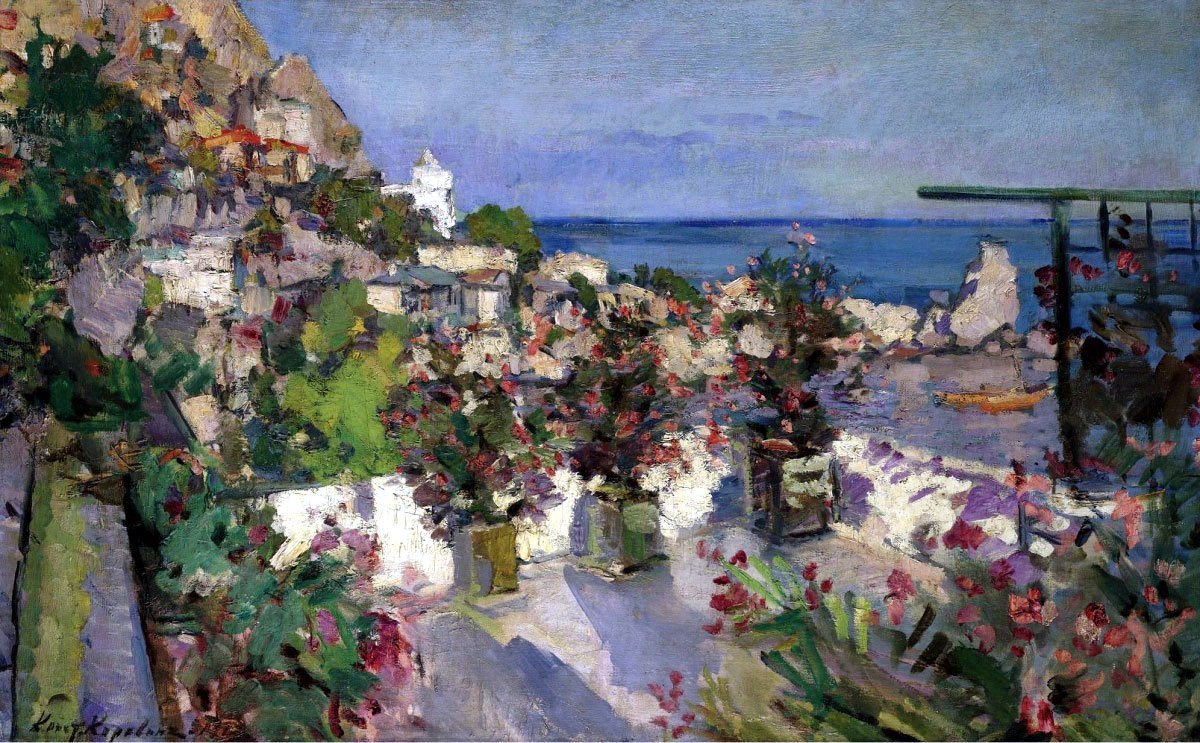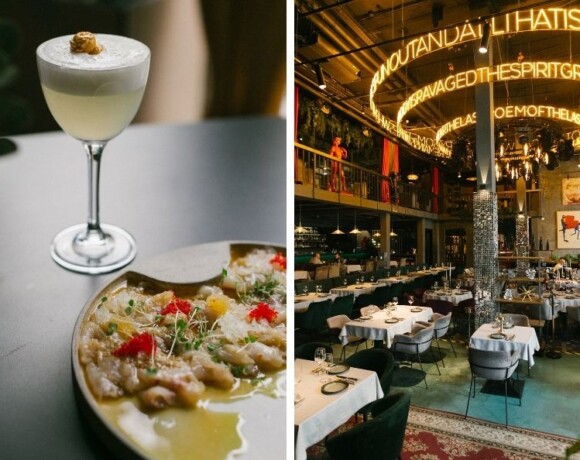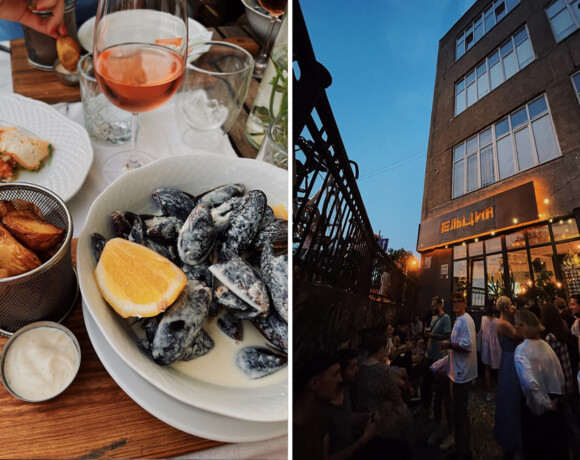The phrase “Russian Impressionism” was not clear to the average citizen of our vast country some years ago. Most educated persons know about the light, bright and impetuous French Impressionism, can distinguish Monet from Manet and easily recognize Van Gogh’s sunflowers from all the still life paintings. Someone has heard something about the American line of the development of this direction of painting – Chase portraits and landscapes of Gassam that are more urban compared to the French. But researchers are still arguing about the existence of Russian impressionism.
Версия на русском языке тут
Konstantin Korovin
The history of Russian Impressionism has started with the painting “Portrait of a Chorus Girl” by Konstantin Korovin, as well as with the misunderstanding and condemnation of the public. Ilya Repin did not believe that the work was performed by a Russian painter when he first saw this work. He said: “Spanish! It`s clear. It`s bold and rich. Perfect. But this is just painting for painting. A Spaniard, however, is with a temperament…”. Konstantin Alekseevich began painting his canvases in an impressionistic manner as a student, while he was unfamiliar with the paintings of Cezanne, Monet and Renoir, since it was long before his trip to France. It was only thanks to Polenov’s experienced glance that Korovin learned that he was using the technique of the French of that time, but he had come to it intuitively. At the same the subjects that he uses for his paintings makes it obvious that it`s a Russian artist. The recognized masterpiece “Northern Idyll”, written in 1892 and stored in the Tretyakov Gallery, shows us Korovin’s love for Russian traditions and folklore. This love was grown in the artist by the “Mamontovsky club” – a community of creative intellectuals, which included Repin, Polenov, Vasnetsov, Vrubel and many other friends of the famous philanthropist Savva Mamontov. In Abramtsevo, where the Mamontov estate was located and where the members of the art club gathered together, Korovin was lucky enough to meet and work with Valentin Serov. Thanks to this familiarity, the work of the established artist Serov acquired the features of light, bright and impetuous impressionism, which we see in one of his early works – “Open Window. Lilacs.”
 Portrait of a Chorus Girl, 1883
Portrait of a Chorus Girl, 1883
 Northern Idyll, 1886
Northern Idyll, 1886
 Bird Cherry, 1912
Bird Cherry, 1912
 Gurzuf, 1915
Gurzuf, 1915
 The Pier in Gurzuf, 1914
The Pier in Gurzuf, 1914
 Paris, 1933
Paris, 1933
Valentin Serov
Serov’s painting is permeated with a feature inherent only of Russian impressionism – his paintings reflect not only the impression of what the artist saw, but also the state of his soul at that exact moment. For example, in the painting “St. Mark’s Square in Venice”, created in Italy, where Serov went in 1887 due to a serious illness, cold gray tones prevail, which gives us an idea of the artist’s health condition. But, despite the rather grim colors, the painting is a reference impressionistic work, since Serov managed to capture the real world in its mobility and variability, and also to express his fleeting impressions. In a letter to the bride from Venice , Serov wrote: “In this century, they all paint everything heavy, nothing pleasant. But I want, I want pleasant, and I will paint only pleasant.”
After a trip to Italy, Valentin Serov returns to Abramtsevo, where he creates his most famous and truly “pleasant” work “Girl with Peaches”, which portray Vera, the eldest daughter of Savva Mamontov. At the time of the creation of this masterpiece, Serov was only 22 years old, but his professionalism let him fill his work with several genres at once: in the picture we see a portrait, a still life, and a landscape outside the window. Contrary to the canons of impetuous impressionism, Serov painted a picture every day for about three months, which, in his own words, “exhausted the twelve-year-old Vera.” But the viewer still gets the impression that the girl sat down for just a minute, and the artist managed to catch the moment and share with us his fleeting, bright and happy impression.
 An open window. Lilacs, 1886
An open window. Lilacs, 1886
 St. Mark’s Square in Venice, 1887
St. Mark’s Square in Venice, 1887
 Girl with Peaches (Portrait of V. S. Mamontova), 1887
Girl with Peaches (Portrait of V. S. Mamontova), 1887
 Coronation. The Anointing of Nicholas II in the Assumption Cathedral, 1896
Coronation. The Anointing of Nicholas II in the Assumption Cathedral, 1896
 The girl illuminated by the sun, 1888
The girl illuminated by the sun, 1888
 Bathing a horse, 1905
Bathing a horse, 1905
Alexander Gerasimov
Alexander Mikhailovich Gerasimov is one of the students of Korovin and Serov, who adopted from them an expressive brushstroke, a bright palette and a sketchy manner of writing. The bloom of the artist’s creativity came at the time of the 1917 revolution, which was reflected in the subjects of his paintings. Despite the fact that Gerasimov was at the service of the party and became famous thanks to the outstanding portraits of Lenin and Stalin, he continued to work on impressionistic landscapes which were still very close to his soul. The work of Alexander Gerasimov “After the Rain” shows us the artist as a master of demonstrating air and light in the picture. No doubt Gerasimov owes this skill to the influence of his famous mentors: Korovin and Serov.
 Artists at Stalin’s dacha, 1951
Artists at Stalin’s dacha, 1951
 Stalin and Voroshilov in the Kremlin, 1950s
Stalin and Voroshilov in the Kremlin, 1950s
 After the rain. Wet terrace, 1935
After the rain. Wet terrace, 1935
 Still life. Field bouquet, 1952
Still life. Field bouquet, 1952
Igor Grabar
In the discussion about late Russian impressionism, it is impossible not to turn to the creative work of the great artist Igor Emmanuilovich Grabar, who adopted many techniques of French painters of the second half of the XIX century during numerous trips to Europe. Using the techniques of classical Impressionists, Grabar shows absolutely Russian landscape motifs and everyday stories in his paintings. While Monet paints the blooming gardens of Giverny, and Degas – beautiful ballerinas, Grabar gives the harsh Russian winter and country life with the same pastel colors. Most of all, Grabar loved to show hoarfrost on his pictures and dedicated to it a whole collection of works consisting of more than a hundred small multi-colored sketches created at different times of the day and in different weather conditions. The difficulty of working on such drawings was that the paint rapidly froze in the cold, so he had to work quickly. But this is exactly the thing that allowed the artist to recreate “that very moment” and convey his impression, which is the main idea of classical Impressionism. Igor Emmanuilovich’s style of painting is often called scientific impressionism, because he paid great attention to light and air on paintings and created many researches on color transfer. Moreover, he was the director of the Tretyakov Gallery in 1920-1925 and made the chronological arrangement of paintings in the gallery.
 Birch Alley, 1940
Birch Alley, 1940
 Winter landscape, 1954
Winter landscape, 1954
 Hoarfrost, 1905
Hoarfrost, 1905
 Pears on a blue tablecloth, 1915
Pears on a blue tablecloth, 1915
 Estate corner (Ray of Sun), 1901
Estate corner (Ray of Sun), 1901
Yuri Pimenov
Completely non-classical, but still impressionism developed in Soviet times, and Yuri Ivanovich Pimenov is its outstanding representative, who started to make a “fleeting impression in pastel colors” after working in the style of expressionism. One of Pimenov’s most famous works is the painting “New Moscow” of the 1930s – bright, warm, as if painted with Renoir’s airy brushstrokes. But at the same time, the subject of this work is completely incompatible with one of the main ideas of Impressionism – the rejection of the use of social and political themes. Pimenov’s “New Moscow” perfectly reflects the social changes in the life of the city, which have always inspired the artist. “Pimenov loves Moscow, its new, its people. The painter generously gives this feeling to the viewer,” the artist and researcher Igor Dolgopolov wrote in 1973. And indeed, looking at the paintings of Yuri Pimenov, we are fond of love for Soviet life, new quarters, lyrical housewarming and urbanism, captured in the technique of impressionism.
Pimenov’s art proves once again that everything “Russian” brought from other countries has its own special and unique path of development. So French Impressionism in the Russian Empire and the Soviet Union absorbed the features of the Russian world outlook, national character and way of life. Russian art has remained alien to Impressionism as a way of conveying only the perception of reality in its purest form, because every painting by Russian artists is filled with meaning, comprehension, and the state of the changeable Russian soul.
 New Moscow, 1937
New Moscow, 1937
 Lyrical housewarming, 1965
Lyrical housewarming, 1965
 Dressing room of the Bolshoi, 1972
Dressing room of the Bolshoi, 1972
 Early morning in Moscow, 1961
Early morning in Moscow, 1961
 Paris. Saint-Dominique Street, 1958
Paris. Saint-Dominique Street, 1958
 Stewardess, 1964
Stewardess, 1964
Perhaps for most people, the surnames Korovin, Serov, Gerasimov and Pimenov are still not connected by a certain style of art, but the Museum of Russian Impressionism, which opened in 2016 in Moscow, nevertheless collected the works of these artists together.
The materials translated into English by Vladimir Grebnev








